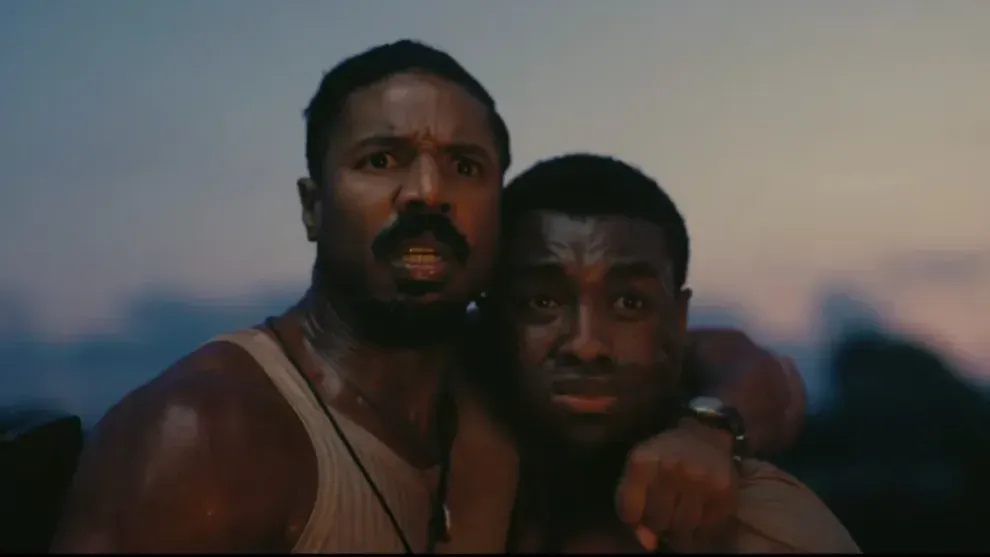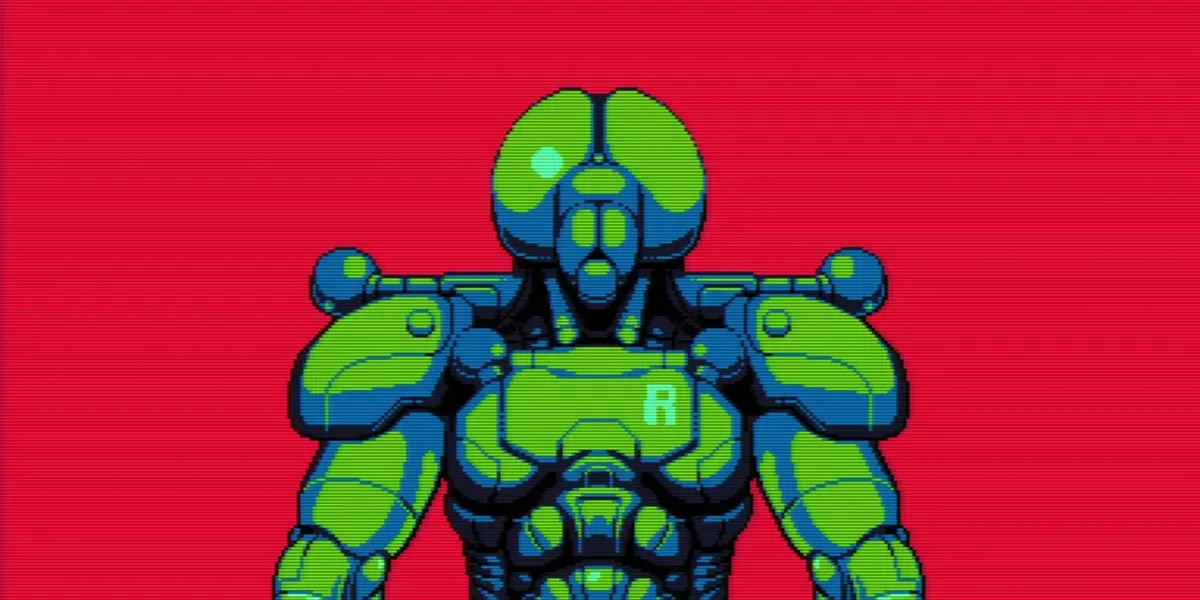Why P.T. Anderson Gets Away With "Retro" But Games Don't

I am sitting at the Vista Theatre at the edge of Echo Park and Silverlake in Los Angeles, frantically trying to find my seat in the dark as P.T. Anderson's sprawling crime epic One Battle After Another is about to begin. Owned and operated by Quentin Tarantino, the Vista is one of several vintage theatres in LA that focus on showcasing the craft of the film industry, either through restorations of older films (e.g., the Academy Museum) or creating a unique setting for a viewing experience (the ornately restored Egyptian Theatre). When you live in LA and don't work in the film industry, as I do, it can be easy to forget that the city's cultural love language is the moving image.
Building on the recent success of vintage film stocks in films like The Brutalist and Sinners, One Battle After Another screens in VistaVision, a widescreen version of the 35mm motion picture film format designed by Paramount Pictures engineers in 1954. While Anderson picked VistaVision to capture the look of the 1971 urban thriller The French Connection, One Battle is a stunning portrait of the breadth of California's natural beauty. We zip from Sacramento's Tower Bridge to wooded alcoves of Humboldt County to the severe and disorienting washes of Anza Borrego. Shooting in VistaVision "is like seeing live music," Benicio del Toro said.
That same week, I received the following press release from a game claiming "new retro-style JRPG with groundbreakingly sweet textmode graphics. (sic)" Huh. I wondered; nowhere did I see The Brutalist, Sinners, or One Battle discussed as "old-school" or "retro," even though all had been captured with technology decades old. The look and feel of these films is critically acclaimed and highly lauded, in large part because they capture a spirit lost in the digital age. "We had cameras on cranes, and there are a lot of moving shots like an old Western, being able to track with the horses. It's a beautiful scene," said cinematographer Autumn Durald Arkapaw about her work with Ryan Coogler in Sinners. But it's certainly not retro.
So why don't we use the term "retro" when discussing old film stocks? Why does music get to have a "warm analog sound" whereas games that use pixel or PS1-era styles are labeled "nostalgic" or "classic"? This linguistic difference points to something fundamental about how games relate to their past, and what they might hold for their future.




The Language Gap: Retro vs. Analog
The last film to lean heavily on VistaVision was in 1961, and the success of The Brutalist last year sparked a frenzy of new films like One Battle, looking to generate a new visual look for their work. And more is on the horizon: Yorgos Lanthimos thriller Bugonia, Alejandro González Iñárritu's, M. Night Shyamalan's, and Greta Gerwig's Narnia: The Magician's Nephew are all using the format for upcoming work. For director and cinematographer Bradley Corbet, it was fitting for a film set in the 1950s to use technology from that period, as well as to capture fine architectural details without the distorting effects of wide lenses.
Ironically, to achieve this effect in public discourse, directors always foregrounded their intent first and then justified the use of the technology to serve that overall vision. The film stock becomes a shorthand for the cinematic mood: dark intensity in One Battle, violent ambiguity in Bugonia, or Southern horror in Sinners. "The whole idea was to make [the film] immersive, and we wanted folks to really be able to experience this world that my grandparents were part of," Coogler said about combining IMAX with Panavision to capture the look of Jim Crow South. His origin story isn't discovering film stock in film school—it's his grandfather's flight from Mississippi to Oakland. By contrast, many films through the 50s and 60s were marketed with their technology front and center (e.g., Technicolor), a practice much rarer today unless it's an IMAX spectacle.
What we talk about when we talk about film is important, and the experience of watching a movie at a theatre like the Vista reminded me of film's multisensory nature. The feel of the seats, the nervous laughter ringing in my ears, the sound of action from inside the bathroom when I had to take a break (it's a long movie!), and the smell of popcorn from the lobby. When we discuss film, critics and directors talk about grain, patina, depth of field, color saturation, and aspect ratios. I used to write about music, and whenever I'd throw something on vinyl, I'd listen for warmth and those analog textures that my ears were surely missing from years of concert attendance.
So why don't we use the term "retro" when discussing old film stocks? Why does music get to have a “warm analog sound” whereas games that use pixel or PS1-era styles are labeled “nostalgic” or “classic”?
Film's chemical indexicality—physical, causal relationship between image and reality—creates what theorist Mary Ann Doane calls "a privileged relation to the real, to referentiality, and to materiality." Each frame exists uniquely in physical space that you can touch and smell. Analog tape and magnetic recording are also named physical processes with the arcane magic of the ancients: tape saturation, transformer distortion, wow and flutter.
Costly Signaling and Material Intention
As directors, Coogler, Anderson, Corbet, and others are keenly aware of film's physical texture, and they are valorizing the material properties of the movie, not the historical period, to help situate us. We filmgoers are embodied entities drifting into another world that is like our own, but not quite. If anything, the physical limitations of film stock and cameras were a barrier to production. "It gives you a deep image, but it's not entirely practical," Anderson said about VistaVision, and editor Andy Jurgensen noted that the cameras were so loud, heavy, and temperamental that the crew had to work around them at times. . Writing about handmade cinema in the LA Review Books, Holly Willis notes: "Whether seeking a slower pace or more profound connection to the materiality of image-making, artists working in this mode also represent a larger cultural desire for an awareness of practice and attention to emergence, or the idea that the world is in a state of constant transformation." All of this thankless, invisble labor is what behavioral ecologists call "costly signaling"—a way to communicate to audiences that the difficulty is the point
In games, the approach to discussing the experience of using the look and feel of an older time is entirely different. While there have been remakes of titles for decades, the emergence of game-making tools like GameMaker and the popularization of retro graphics took off at the beginning of the 2010s. Super Meat Boy, Pez, and Hotline Miami all explicitly couched themselves as explicit heirs to the NES and SNES generations. Since then, not a week goes by that I don't get a press release for a "retro," "old school," "classic style" game of a variety of different genres. But why did games embrace this history in a way that other media only dabble in it?

Two Types of Nostalgia in Gaming
What happens when you have the same taste as your parents? - Simon Reynolds
Media artist Svetlana Boym's work on nostalgia offers a helpful signpost for understanding what pixel-style games were trying to do. Boym distinguishes between two types of nostalgia: reflexive and restorative. In restorative nostalgia, an entre place is reconstructed. Think of the UNESCO World Heritage reconstruction of the center of Warsaw that was razed by the Nazis in 1944 or the controversial refurbishment of the Sistine Chapel. Restorative nostalgia seeks to do the impossible: create a time-travel experience by evoking something that could have been generated decades ago.
Reflective nostalgia, by contrast, involves emotional longing without literal reconstruction. "It is actually a yearning for a different time—the time of our childhood, the slower rhythms of our dreams," Boym wrote in 2007. This type of nostalgia is at war with the idea of progress and with time itself: we can live in the feeling of another place, without the attendant baggage of the past.
Games researcher Maria Garda, who pointed me to Boyn, has done extensive work on nostalgia in retro-gaming and writes fondly of new retro-games: "The nostalgic gesture of game designers serves creativity and artistic erudition. These, in turn, are the motivations that underlie every 'neo' style in art and could be deemed as constituting a more universal tendency of every medium that relies on self-reference," she writes.
The Arrested Development of Game Aesthetics
But attempts to justify retro-gaming elide the question of intent. On the one hand, the audience's perceptions of these games are an essential part of the process. That something feels like a game one would have played as a child is a meaningful signal of what a game is trying to do. But my concern is that the long finger of history has worked its way into contemporary work such that creators and players are constrained by the vice of nostalgia. To wit, many of the first-run retro games from the last decade have either stopped making games entirely or are revisiting the same material over and over again (Shovel Knight, Hotline Miami, McPixel, Rain World, etc.).
One rare exception is the gaming work of Derek Yu's UFO 50, which creates the imagined history of a fictional game publisher whose history comes alive through a Golden Age video games mixtape. Film and media professor Dominic Arseault called this feeling uchronia, which "is neither past nor future; a non-time, a time that never was (and never will be)." But Yu's work is the exception, and the issue more broadly is game makers self-styling their work as retro without making an argument for what that means.

Other media are certainly not immune to the allure of the past. In film, we have reboots (like the new The Naked Gun, which I regret to tell you is quite good); in music, there are plenty of self-referential cycles from disco-punk (The Fall to The Rapture) to Bruno Mars' wholesale vintage theft. Theatre is awash with adaptations. The difference is that all of the nostalgia-bait in popular culture is in that subjunctive mood—a desperate attempt to draw from older source material, but using contemporary techniques. If anything, the rise of vintage film stock aficionados demonstrates a literacy with the past and the present, blending the look of a desired era with the sensibilities of our time.
Are game creators making deliberate aesthetic arguments, or just defaulting to what they know? Perhaps their perspectives haven't moved beyond their childhood. Maybe they haven't cultivated tastes across the arts and media. The unwillingness to broaden the visual palette implies these designers simply don't have anything new to say.
Learning to Use History Without Being Trapped By It
If I squint, I can see some reasons why "retro" remains a calling card in games. It's accessible to create at a low cost. There are free tools, abundant tutorials, and the freedom of working alone. Eric Barone, the creator of Stardew Valley, has made almost half a billion dollars from his game. Why not spin the wheel?
But given the low cost of new game engines, there's so much more that you can do on a budget—the chaotic interactions of Theo Triantafyllidis, meditative reflections of Ina Chen, and the biomimicry of Alice Bucknell. There is so much tape left to record the song of the future! That some who make games default to their earliest days is arrested development.
Are game creators making deliberate aesthetic arguments, or just defaulting to what they know?
"The danger of nostalgia is that it tends to confuse the actual home and the imaginary one," Boym wrote. A simple reason why games can't and shouldn't pull the nostalgia lever is that they simply haven't learned how to use nostalgia responsibly. Filmmakers, musicians, dramaturgs, writers–they've cultivated taste across decades, centuries even, of their respective fields and can distinguish between using history and being trapped by it. Too many game creators are still playing the games of their childhood instead of understanding them.
But maybe we're also looking at it the wrong way. Instead of the past 50 years of video games, we should be looking outside of the medium entirely. When I look at the game makers that excite me, they're coming from different fields entirely-film, music, architecture, literature, and so on—and then mapping their point of view onto the medium of games. Games are young enough that "retro" still means someone's actual childhood, not a cultural memory.
Maybe in another thirty years, when game creators have enough distance from the NES era, they'll finally use those aesthetics the way Coogler and Anderson use film stock: as a deliberate choice in service of something larger. Until then, retro-pixel-old-school-vintage-whatever is what it's always been—not an aesthetic argument, but a limitation mistaken for a style.


Comments ()